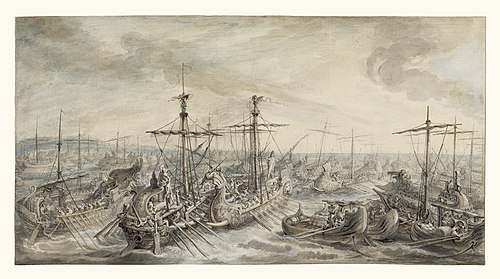 The Wikipedia article of the day for October 19, 2020 is V. Gordon Childe.
The Wikipedia article of the day for October 19, 2020 is V. Gordon Childe.V. Gordon Childe (1892–1957) was an Australian archaeologist who specialised in the study of European prehistory. He spent most of his life in the United Kingdom, working as an academic for the University of Edinburgh and then the Institute of Archaeology, London, and wrote twenty-six books during his career. Initially an early proponent of culture-historical archaeology, he later became the first exponent of Marxist archaeology in the Western world. Childe studied classics at the University of Sydney before moving to England to study classical archaeology at the University of Oxford. In 1921 he became librarian of the Royal Anthropological Institute and journeyed across Europe to pursue his research into the continent's prehistory. He co-founded The Prehistoric Society in 1934 and was its first president. In a 1935 presidential address he argued that a Neolithic Revolution initiated the Neolithic era, and that other revolutions marked the start of the Bronze and Iron Ages.
 The Wikipedia article of the day for October 18, 2020 is
The Wikipedia article of the day for October 18, 2020 is  The Wikipedia article of the day for October 17, 2020 is
The Wikipedia article of the day for October 17, 2020 is  The Wikipedia article of the day for October 16, 2020 is
The Wikipedia article of the day for October 16, 2020 is  The Wikipedia article of the day for October 13, 2020 is
The Wikipedia article of the day for October 13, 2020 is  The Wikipedia article of the day for October 12, 2020 is
The Wikipedia article of the day for October 12, 2020 is  The Wikipedia article of the day for October 11, 2020 is
The Wikipedia article of the day for October 11, 2020 is  The Wikipedia article of the day for October 10, 2020 is
The Wikipedia article of the day for October 10, 2020 is  The Wikipedia article of the day for October 9, 2020 is
The Wikipedia article of the day for October 9, 2020 is  The Wikipedia article of the day for October 8, 2020 is
The Wikipedia article of the day for October 8, 2020 is  The Wikipedia article of the day for October 6, 2020 is
The Wikipedia article of the day for October 6, 2020 is  The Wikipedia article of the day for October 5, 2020 is
The Wikipedia article of the day for October 5, 2020 is  The Wikipedia article of the day for October 4, 2020 is
The Wikipedia article of the day for October 4, 2020 is  The Wikipedia article of the day for October 3, 2020 is
The Wikipedia article of the day for October 3, 2020 is  The Wikipedia article of the day for October 2, 2020 is
The Wikipedia article of the day for October 2, 2020 is  The Wikipedia article of the day for October 1, 2020 is
The Wikipedia article of the day for October 1, 2020 is  The Wikipedia article of the day for September 29, 2020 is
The Wikipedia article of the day for September 29, 2020 is  The Wikipedia article of the day for September 28, 2020 is
The Wikipedia article of the day for September 28, 2020 is